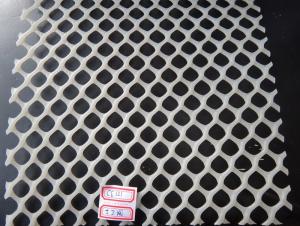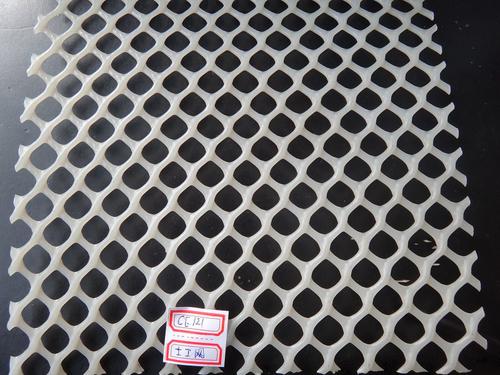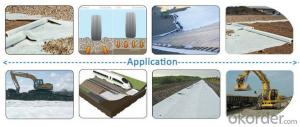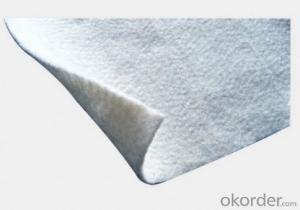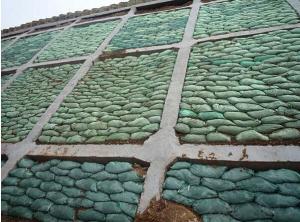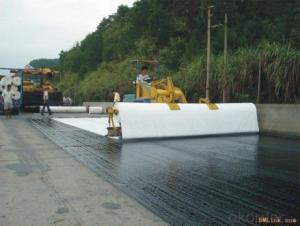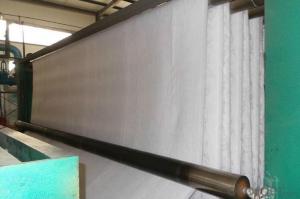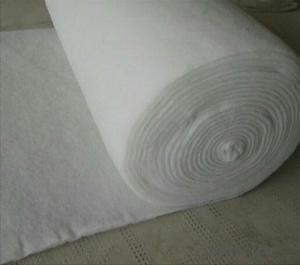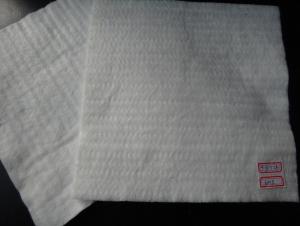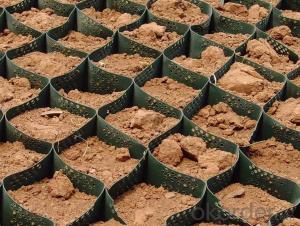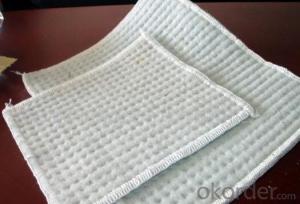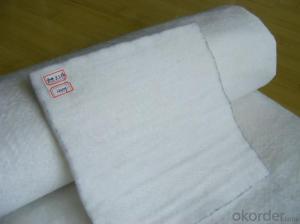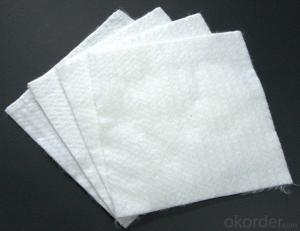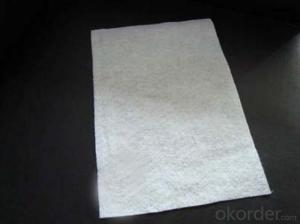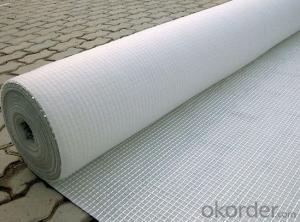Geotextile for Artificial Grass - Geonet for Road Highway Fence
- Loading Port:
- Tianjin
- Payment Terms:
- TT OR LC
- Min Order Qty:
- -
- Supply Capability:
- 5000rolls m²/month
OKorder Service Pledge
OKorder Financial Service
You Might Also Like
Geonet for Road Railway Highway Tunnel is Made from thermoplastic resin and UV resistant by extrusion into square, diamond and hexagon net shape.
Specification: CE121. CE131. CE151. Dni. Hfio
Property of Geonet for Road Railway Highway Tunnel
L. Uniform structure, can bear high pressure. Improve the roadbed bearing capacity, enlarge its
Lifetime
2. Anti-aging, protect dam and rock surface from chemical erosion and sea water corrode
Application of Geonet for Road Railway Highway Tunnel
River bank and dam protection; Seacoast treatment; Tunnel project and common soft soil
Reinforcement.
Production standard of Geonet for Road Railway Highway Tunnel
GB/t19470-2004
Jt/t 513-2004
- Q: How do geotextiles help in reducing the risk of landslides?
- Geotextiles help in reducing the risk of landslides by providing stabilization and reinforcement to the soil. When placed on slopes or hillsides, they act as a barrier that prevents soil erosion and the movement of loose materials. The geotextiles have a permeable nature, allowing water to pass through while retaining the soil particles. This helps in maintaining the stability of the slope, reducing the chances of landslides. Additionally, geotextiles can also aid in draining excess water from the soil, further enhancing the stability and reducing the risk of landslides.
- Q: Can geotextiles be used in geosynthetic reinforced walls?
- Yes, geotextiles can be used in geosynthetic reinforced walls. Geotextiles are commonly used as a separation and filtration layer in geosynthetic reinforced walls to prevent soil erosion, improve drainage, and provide stability to the structure.
- Q: How do geotextiles help with load support in unpaved roads?
- Geotextiles help with load support in unpaved roads by providing a stable base and preventing the mixing of different soil layers. They act as a barrier between the road surface and the underlying soil, distributing the load evenly and reducing the risk of rutting and deformation. Additionally, geotextiles enhance the drainage capabilities of the road, improving its overall strength and durability.
- Q: Geotextile vertical and horizontal stretching the gap is too much how to adjust
- Geotextile longitudinal and horizontal tensile strength of the gap adjustment, mainly in the carding, laying the net, drawing three links to control, sort out the ratio of Daofu regulation, shop layer, shop curtain speed ratio, Sticks, input and output differences, and so are the cause of a huge gap, the other fiber curl, and so is the key. For the above adjustment, you will find the law. In order to geotextile stretch the vertical and horizontal adjustment equal.
- Q: What are the specifications for geotextiles in civil engineering projects?
- The specifications for geotextiles in civil engineering projects typically include factors such as the material type, weight, strength, permeability, and durability. These specifications ensure that the geotextile selected is suitable for the intended application, whether it's erosion control, filtration, separation, or reinforcement. Additionally, the specifications may also cover aspects like installation requirements, testing methods, and compliance with industry standards to ensure the geotextile performs effectively and meets the project's requirements.
- Q: Can geotextiles be used in geosynthetic encased columns?
- Yes, geotextiles can be used in geosynthetic encased columns as they provide reinforcement, filtration, and separation functions. They help to improve the stability and performance of these structural elements by enhancing soil confinement and preventing the loss of fine particles.
- Q: Precautions for Polyester Filament Geotextiles
- Geotextile storage to meet the following requirements: the Treasury clean no debris, no chemical corrosion; not sun, tarnished; not weight, not scratch, to prevent violent collision; away from the hot source; dry and cool warehouse; There is a need for fire tools, fire hydrants, fire extinguishers and so on. Geotextile transport, loading and unloading requirements: can not be mixed with sharp items; hoisting with flexible rope; can not use steel wire rope directly hoisting; not with sticks, iron bars and other hardware auxiliary top loading; Stress dispersion measures, to avoid tightly tightened with a rope.
- Q: Can geotextiles be used in coastal revetment works?
- Yes, geotextiles can be used in coastal revetment works. Geotextiles are commonly used as a protective layer in coastal engineering projects to prevent erosion and provide stabilization to the soil or slopes. They can be placed under riprap or other armoring materials to enhance their effectiveness and longevity in protecting coastal areas from wave action and erosion.
- Q: Geotextile use
- Geotextile is a new type of building materials, raw materials are polyester, acrylic, nylon and other polymer polymer synthetic fiber. In accordance with the manufacturing method is divided into: there are two types of geotextile and non-woven geotextile. Geotextile with anti-seepage, anti-filtration, drainage, isolation, reinforcement, protection, sealing and other functions, it with the conventional masonry and concrete material seepage effect compared to a low investment, simple construction process, short duration Infiltration effect is good, the channel effective use of high coefficient. Water conservancy engineering dams and slope protection filter, channel isolation, seepage control; road, railway, airport runway foundation isolation, filter, drainage, slope, retaining wall and road reinforcement, drainage; , Geotextile has been widely used in the field of infrastructure construction, and has been gradually applied in the field of infrastructure construction, and the use of geotextile In a wider area.
- Q: What causes the geotextile aging phenomenon
- Gundam has the characteristics of the product we are all obvious, both in the highway, dams, railways and many other occasions have a very strong product features, and the performance is very outstanding, geotextile is an irreplaceable geotechnical material. Although the geotextile has unparalleled advantages, but the product is not perfect that any product has more or less problems or less, geotextile is the same, its aging problem has been with us, then in the end what causes Geotextile aging? Geotextile aging problem refers to the geotextile in the sun by the smell, temperature changes, biological erosion, chemical corrosion, moisture and other external factors, so that the geotextile strength and performance gradually weakened, loss of seepage effect. UV radiation intensity changes with the intensity of solar radiation, geotextile aging speed with the intensity of UV radiation and speed. Synthetic polymer polymer is concerned, the sun radiation is the main factor in the degradation of polymer degradation. UV radiation in the sun is the most important factor in the aging of the fabric. The ultraviolet radiation causes the polymer to produce a photooxidative decomposition reaction, especially ultraviolet light at a wavelength of 290 to 400 mPm, which has a significant decomposition effect on the polymer , Because the geotextile in the range of ultraviolet light energy is higher than the polymer chemical steamed broken the required energy, so the polymer material aging is very obvious.
Send your message to us
Geotextile for Artificial Grass - Geonet for Road Highway Fence
- Loading Port:
- Tianjin
- Payment Terms:
- TT OR LC
- Min Order Qty:
- -
- Supply Capability:
- 5000rolls m²/month
OKorder Service Pledge
OKorder Financial Service
Similar products
Hot products
Hot Searches
Related keywords
